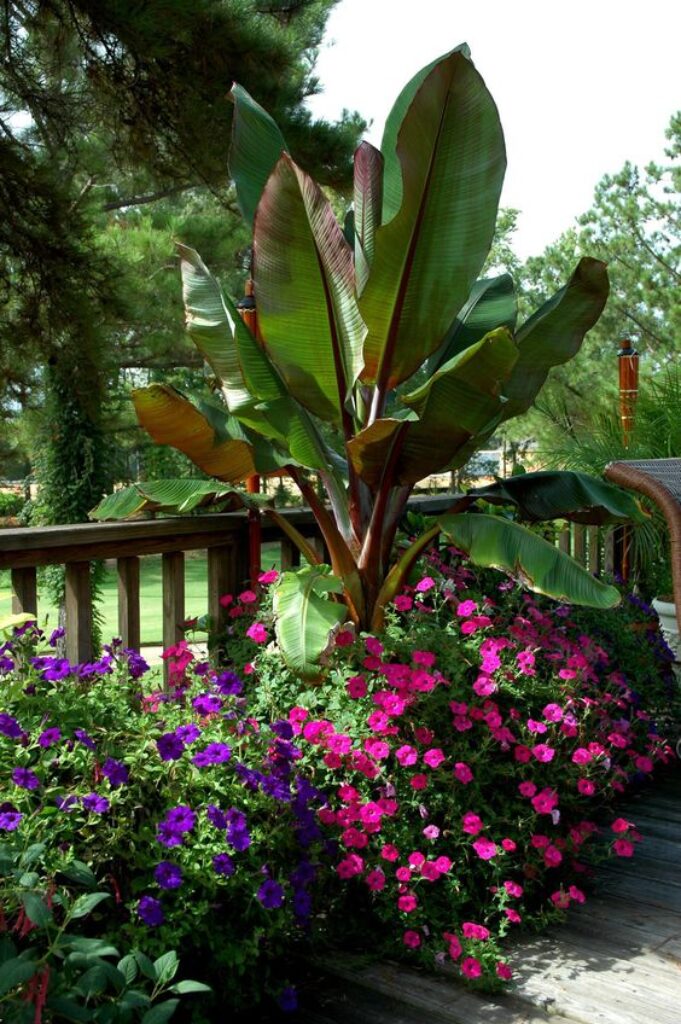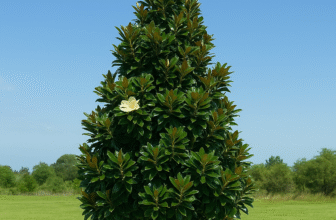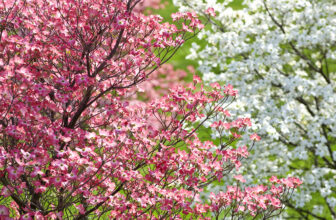Introduction:
Hi everyone! Today, I want to share something really exciting and fascinating – The Banana Tree. When you think of bananas, you probably picture a bunch of yellow fruits sitting on your kitchen counter. But have you ever wondered about the tree they come from? Let me take you on a little journey into the world of the banana plant.
The Banana Tree: Not a Tree?
First things first, did you know that the banana tree isn’t a tree? I was surprised too when I first learned this. The banana “tree” is technically a giant herb! Unlike trees with a woody trunk, the banana plant has a pseudostem, which is a bunch of tightly packed leaf bases. This makes it one of the largest herbaceous plants in the world.
Growing the Banana Plant
Banana plants grow best in warm, tropical climates with plenty of sunlight and water.
- In a banana plantation, you’ll see rows and rows of lush green plants stretching as far as the eye can see.
- Each plant needs about 9 to 12 months to grow and produce fruit.
- During this time, they can reach heights of up to 30 feet!
The Fascinating Banana Flower
One of the most intriguing parts of the banana plant is its flower. The banana flower, also known as the “banana heart,” is a large, teardrop-shaped, maroon or purple blossom. It hangs at the end of the banana fruit cluster and is quite a sight to see. The flower itself is edible and used in many dishes in various cultures.

From Flower to Fruit
As the banana flower blooms, it produces clusters of bananas. Each cluster, or “hand,” has multiple “fingers,” which are the bananas. Watching this transformation from flower to fruit is truly magical. Bananas grow in an upward direction, which is why we often see them curved. This happens because they grow towards the sunlight in a process called “negative geotropism.”
The Versatile Banana
- Bananas are not just a tasty snack; they are incredibly versatile.
- They are packed with essential nutrients like potassium, vitamin C, and dietary fiber.
- You can eat them raw, bake them into bread, blend them into smoothies, or even use them in savory dishes.
- Every part of the banana plant is useful:
- Leaves can be used for cooking and wrapping food.
- Fibers can be turned into paper or textiles
The End of the Banana Plant’s Life Cycle
After the banana plant has produced its fruit, it doesn’t grow any more bananas. Instead, it sends out new shoots from its base, called “suckers.” These suckers grow into new banana plants, continuing the cycle of growth and fruit production. The original plant eventually dies back, making way for its offspring.
Growing Banana Plants Outdoors
Banana plants thrive in warm, sunny climates. If you live in a region with mild winters and warm summers, you can grow banana plants in your garden. Here are some tips:
- Sunlight: Banana plants need full sun, at least 6-8 hours a day.
- Soil: They prefer well-draining, fertile soil rich in organic matter.
- Water: Keep the soil consistently moist but not waterlogged. Banana plants require a lot of water, especially during the growing season.
- Temperature: They grow best in temperatures between 75-95°F (24-35°C). They can tolerate slightly cooler temperatures but may not produce fruit in colder climates.

Growing Banana Plants Indoors
If you live in a colder climate or don’t have garden space, you can still grow a banana plant indoors. Here’s how:
- Light: Provide as much natural sunlight as possible. Place the plant near a south-facing window. You might need to supplement with grow lights during the winter months.
- Potting: Use a large, sturdy pot with good drainage. Banana plants have extensive root systems and need plenty of space to grow.
- Soil: Use a rich, well-draining potting mix. Adding compost can help provide the nutrients they need.
- Water: Keep the soil evenly moist. Indoor air can be dry, so mist the plant regularly to maintain humidity.
- Temperature: Keep the indoor temperature between 68-85°F (20-29°C). Avoid placing the plant in drafts or near heating vents.
Dwarf Banana Varieties
For indoor growing or smaller garden spaces, consider dwarf banana varieties. These plants are more compact, making them easier to manage indoors. Some popular dwarf varieties include:
- Dwarf Cavendish: A common variety that grows to about 6-9 feet tall.
- Dwarf Red: Known for its reddish-purple leaves and smaller size.
- Dwarf Lady Finger: Produces small, sweet bananas and stays relatively compact.
Final Tips
- Fertilizing: Banana plants are heavy feeders. Use a balanced fertilizer every 4-6 weeks during the growing season.
- Pruning: Remove any dead or damaged leaves to keep the plant healthy.
- Pests: Watch for common pests like spider mites and aphids. Treat infestations promptly with insecticidal soap or neem oil.
Tips for using artificial banana trees
Artificial banana trees can be a fantastic addition to your home decor, bringing a touch of tropical flair without the maintenance required for a real plant. Here are some creative ideas and tips for using artificial banana trees in your home decor:

Living Room
- Corner Accent: Place a tall artificial banana plant in an empty corner of your living room to create a lush, tropical vibe. It can fill the space and add height to your decor.
- Beside Furniture: Position the tree next to a sofa or armchair to create a cozy, inviting seating area. The greenery can help soften the lines of the furniture and add a natural element.
- Window Area: If you have a large window or sliding glass doors, an artificial banana tree can look great nearby. It creates an indoor-outdoor connection and enhances the view.
Bedroom
- Bedside Decor: Place a small or medium-sized artificial banana plant next to your bed for a refreshing, natural touch.
- Reading Nook: If you have a reading nook or a corner with a comfy chair, adding a banana tree can make the space feel more serene and relaxing.
Entryway or Hallway
- Welcoming Entry: Position an artificial banana herb near your front door or in the entryway to greet guests with a welcoming, tropical feel.
- Hallway Accent: Use the tree to brighten up a long hallway. It can break up the space and make the hallway more interesting.
Bathroom
- Spa-Like Atmosphere: If you have enough space, an artificial banana tree can transform your bathroom into a spa-like retreat. Place it near the bathtub or in an empty corner.
- Vanity Area: A smaller banana tree can add a touch of greenery to your vanity area, making your morning routine more pleasant.
Dining Room
- Dining Corner: Place an artificial banana tree in a corner of your dining room to create a vibrant, lush atmosphere during meals.
- Buffet or Sideboard: Position the tree next to a buffet or sideboard to add height and visual interest to the room.
Home Office
- Workspace Enhancement: Add an artificial banana tree to your home office to create a calming, productive environment. It can help reduce stress and make the space feel more inviting.
- Behind the Desk: Place the tree behind your desk to provide a green backdrop for video calls and create a professional, stylish setting.

General Tips
- Pot and Planter Choice: Use stylish pots or planters that match your decor. You can choose from various materials like ceramic, wicker, or metallic finishes.
- Lighting: Position the artificial banana herb in areas with good lighting to enhance its appearance. Avoid placing it in direct sunlight to prevent fading.
- Mix with Real Plants: Combine artificial and real plants for a more natural and dynamic look. This can help make the artificial tree look more realistic.
- Regular Cleaning: Dust the leaves regularly to keep the tree looking fresh and vibrant.
By incorporating artificial banana trees into different areas of your home, you can enjoy the beauty of tropical greenery all year round without watering or maintenance.
the banana tree is an incredible plant with so much more to it than meets the eye. From its giant herbaceous structure to its beautiful flowers and delicious fruit, there’s much to appreciate. Next time you enjoy a banana, take a moment to think about the fascinating journey it took to reach you!
I hope you enjoyed learning about the banana plant as much as I did. If you have any questions or want to share your own banana tree experiences, please leave a comment below. Happy banana-ing!





